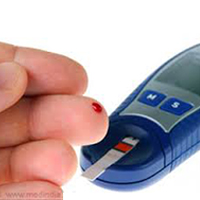Maintaining normal, healthy blood sugar levels is a vital part of our physiology, as important as blood lipid management and weight management. Blood sugar is closely linked to the global obesity epidemic we are experiencing, because obese people are at a higher risk of developing diabetes with all its ensuing complications.
In fact, the single best predictor of type 2 diabetes is being overweight or obese. Almost 90 percent of people having type 2 diabetes are obese or overweight. Those who are obese or overweight have greater pressure placed on their body’s pancreatic beta cells to make enough insulin to control blood sugar levels, and this causes the higher risk of developing diabetes.
The reported diabetes cases in the U.S. increased 30% during the 1990’s and greater increases in reported diabetes cases are expected because of the growing rate of obesity.
The next most important factor in blood sugar management is diet, including what we drink. Soda pop manufacturers and the canned foods industry have switched to high fructose corn syrup in the late 1970’s and the beginnings of the obesity rise can be traced back to that time. The reason that fructose or high fructose corn syrup increases obesity is that fructose stimulates lipogenesis in the liver, the formation of new fat cells to a much greater extent than cane sugar (sucrose) does.
Fructose also has a ten times greater potential than glucose itself for causing early glycation products which can then be transformed into Advanced Glycation Endproducts, or AGE’s.
AGE’s are the cross-linking of body proteins, including DNA by aldehydes, compounds that act like a pair of handcuffs that cross-bind proteins in an unnatural, unscheduled way. Scheduled cross-linkage is a natural process of metabolism that is controlled by enzymes.
Scheduled glycation occurs when fructose or glucose molecules are split open by metabolic enzymes so they can be used as fuel for metabolism, but this also exposes two aldehydes in the glucose or fructose molecule that can then cross-link with nearby body proteins.
Unscheduled glycation takes place over a much greater time-period and is the direct, slow direct reaction of glucose with body proteins.
Glycation causes a stiffening of collagen and muscle fibers which we experience during normal aging. This process is accelerated in diabetes. The most serious cross-links occur in endothelial cells, which line the circulatory system and help contribute to atherosclerosis. Cross-linkage of endothelial receptor cells where LDL-cholesterol docks to transport cholesterol, causes a loss of these receptors and an age-related rise in circulating LDL-cholesterol.
Diabetics and persons with elevated blood sugar also have an elevated HbA1c, the measure of how much hemoglobin is glycated.
Blood sugar management strategies include maintaining a normal body weight, which is also measured as body mass index, the ratio of height to weight.
Another important strategy is to limit or eliminate soda pop, sweets, candies and other calorie-dense sugars from the diet.
Several versions of high protein diets have appeared in recent decades and all are based on limiting complex carbohydrate and sugar intake.
Insulin Resistance
Insulin resistance appears to be central to obesity and developing hyperglycemia.
There is a large 79% variance in insulin sensitivity in the general population. There is a well-established relationship between insulin resistance, central fat and abdominal adiposity. These factors are a strong marker and may be a major determinant of insulin resistance in both men and women.
Insulin resistance is also attributed to peripheral insulin resistance, which is the percentage of fat to muscle ratio in the arms and legs. This would seem to indicate that weight training which would increase muscle to fat ratio in favor of muscle, would be a good strategy to decrease insulin resistance.
Drugs like metformin of the biguanide class, are the most widely prescribed oral antidiabetic drugs in the world and are the main line treatment for type 2 diabetes.
However, there are numerous natural compounds that have been used successfully to treat diabetes and hyperglycemia.
Berberine, from the protoberberine family of alkaloids, is mainly obtained from the Berberis aristata plant species, and is widely used in China to treat hyperglycemia. Berberine has been used successfully in 22 clinical trials, only a few of which have been translated and published in Western journals.
Chromium salts, include chromium picolinate and chromium polynicotinate have a large body of clinical trials in hyperglycemia and diabetic studies. More recently, studies using chromium polynicotinate, have had better results in lowering insulin resistance and blood sugar than chromium picolinate, which in two studies, actually increased insulin resistance compared to a control or pretreatment group.
Cinnamon extracts or cinnamon powder from Cinnamomum cassia have considerable clinical data showing a lowering of insulin resistance and blood sugar except in postmenopausal women. The mechanism of action of cinnamon and what active principle or principles are responsible for insulin resistance have not yet been identified.
Ayurvedic traditional medicine has identified several plants and their extracts that have been used to treat diabetes and hyperglycemia.
Pterocarpus marsupium heartwood carved out, filled with water and left standing for some time has been used to treat diabetes described in Ayurveda by the symptoms of thirst and weakness. Modern research has identified (-)-catechin and pterostilbene as active constituents of the plant. (-)-catechin has the unique ability to stimulate the growth of new beta cells on the isle of Langerhans.
Pterostilbene, a close relative of resveratrol, has clinical data supporting healthier body composition in athletes, selective lowering of COX-2 inflammatory enzyme and lowering blood glucose levels.
Other Ayurvedic plant extracts that have hypoglycemic activity include Terminalia chebula, Tribulus terrestris, Shirishadi and Curcuma longa.


